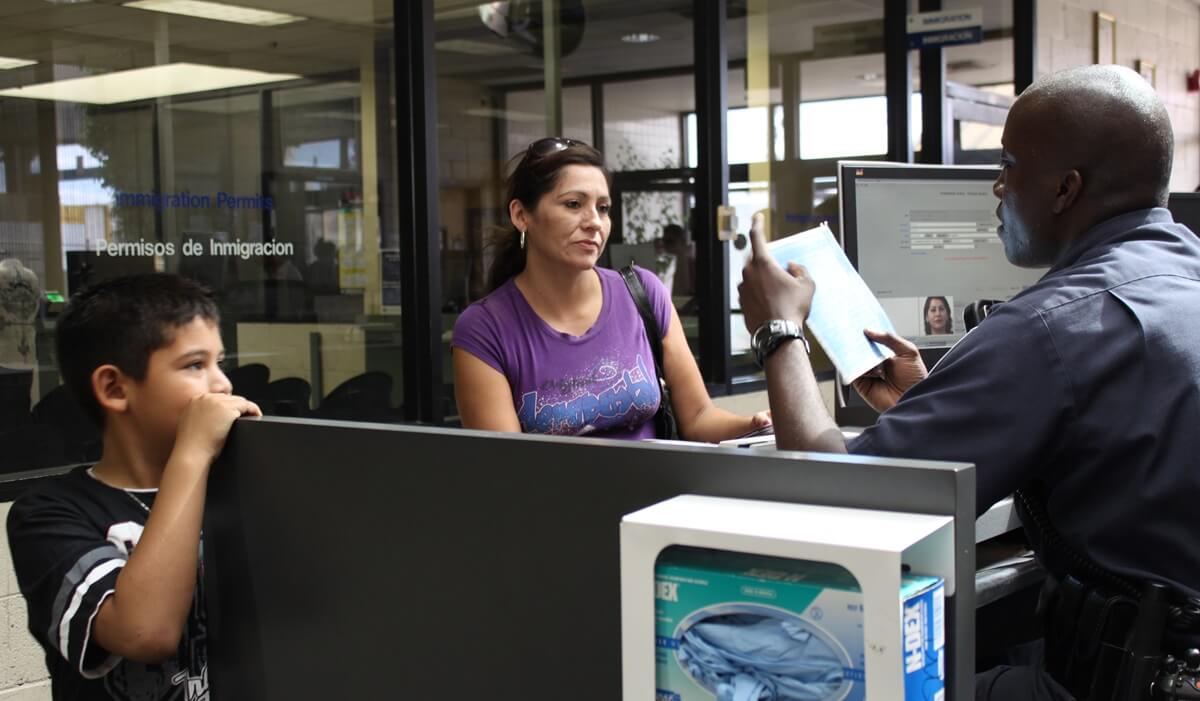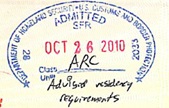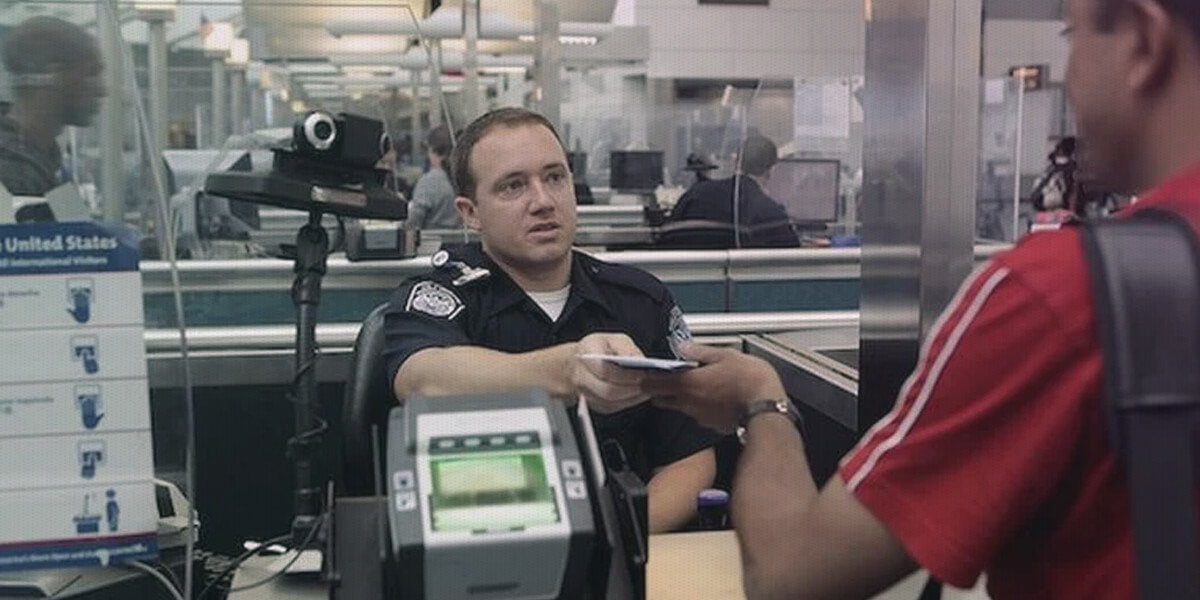
A permanent resident can generally travel abroad and reenter the United States by simply using a permanent resident card (green card) at a U.S. port of entry. The Customs and Border Protection (CBP) officer will want proof of your immigration status and make a determination if you’ve done anything to lose that status. But there are situations that a reentry permit for permanent residents is necessary instead of the green card.
Are you certain that immigration officials will view your travel as temporary?
What can a reentry permit do for permanent residents?
What kind of problems will I have without a reentry permit?
How can permanent residents apply for a reentry permit?
How long will the permit be valid?
This is urgent. How fast can I get my travel document?
How will my travel affect naturalization?
Reentry to the U.S. after Travel Abroad
As a general rule, it's ideal for permanent residents to limit their travel abroad to less than six months. This helps preserve their continuous residence requirement for naturalization, and it reduces exposure to concerns of abandonment. But there are circumstances when permanent residents need to be outside the United States for longer periods of time.
After traveling abroad, the CBP officer at your U.S. port of entry will need to determine if your travel was “temporary” in nature. To qualify as a temporary trip, you must have had the intention to return to the United States at the time of departure and throughout the entire trip. Employment, family, filing of taxes, involvement in the community all demonstrate ties to the U.S. To determine your intentions, some of the questions that a CBP officer may ask cover topics such as:
- purpose for departing;
- termination date of travel abroad;
- place of employment;
- place of actual home and property ties;
- family ties to the U.S.;
- filing of U.S. income tax returns as a U.S. resident; and
- the proportion of time you are in the U.S. versus abroad.
A reentry permit can help avoid two types of problems experienced by permanent residents:
- Your permanent resident card becomes technically invalid for reentry into the United States if you are absent from the U.S. for one year or more.
- Your permanent resident status may be considered as abandoned for absences shorter than one year if you take up residence in another country.
Purpose of the Reentry Permit for Permanent Residents
The main purpose of a reentry permit is that it establishes that you did not intend to abandon your U.S. permanent resident status, and it allows you to apply for admission to the United States after traveling abroad for up to two years without having to obtain a returning resident visa. A U.S. permanent resident must maintain residence in the United States. As previously mentioned, a permanent resident card becomes technically invalid for reentry into the United States if the permanent resident is absent from the U.S. for one year or more. Extensive travel to another country, even for trips of less than one year, can create suspicion that the permanent resident has established residence in another country. This generally becomes an issue at reentry to the United States through an interview by the CBP officer.
A reentry permit can also serve as a travel document. In some cases, permanent residents are not able to get a passport from their home country. This is generally the case if the permanent resident is “stateless” or has fled a country in fear of persecution (asylees and refugees). Since a permanent resident also cannot obtain a U.S. passport, another travel document is required. In these situations, a permanent resident may request a permit to use as a travel document.
On rare occasion, a permanent resident may obtain a reentry permit to visit a certain country because that country will not honor a passport of the resident’s country of nationality.
No Reentry Permit Required for Some Residents
Certain permanent residents can reenter the United States with only their permanent resident card, even after an absence of more than one year. Included in this group are civilian employees of U.S. government agencies returning from assignments abroad on official orders and a spouse or child of a civilian employee of the U.S. government or a spouse or child of a member of the U.S. armed forces as described in 8 CFR 211.1(a)(6).
Problems without a Permit
Without a reentry permit, it is likely that a permanent resident will encounter stiff questioning from the CBP officer when attempting to reenter the United States. If unsatisfied, the CBP officer may refer you to an immigration court for removal proceedings. At the very least, a permanent resident will undergo a time-consuming hassle that could translate into an expensive fee or attorney bill. All of this can generally be prevented by obtaining a reentry permit for permanent residents before traveling abroad.
If a CBP officer notices that you've been abroad for a significant period of time, you may be advised that a non-temporary trip abroad will lead to abandonment of your permanent resident status. In some cases, the officer may even make a notation on your passport stamp that you have been "advised." See adjacent image.

This is strong indicator that you may be at risk for your next reentry. Speak to an immigration attorney before traveling abroad again. It's likely that obtaining a reentry permit and maintaining ties to the United States will resolve this issue.
Use Form I-131 to Request a Reentry Permit
To apply for a reentry permit, permanent residents should file Form I-131, Application for Travel Document, along with a $630 USCIS filing fee.
The applicant must be physically located in the U.S. at the time the application is filed. (For the purposes of filing Form I-131, the United States includes all 50 states, the District of Columbia, and all territories.) The applicant must also be present in the U.S. for the biometrics appointment, and USCIS will only mail the the reentry permit a U.S. mailing address.
Permits Not Always Valid for Two Years
Reentry permits for permanent residents are generally valid for two years from the date on which USCIS issues the permit. However, pursuant to 8 CFR 223.2(c)(2), a permanent resident who, since becoming an lawful permanent resident or during the past five (5) years, whichever is less, has been outside of the U.S. for more than four (4) years in the aggregate, will be issued a permit with validity of only one (1) year from the date of issuance.
USCIS makes exceptions for certain permanent residents employed by a public international organization of which the United States is a member or is a professional athlete. In these cases, USCIS may issue the reentry permit for two years despite extended periods of absence from the U.S.
Further, a conditional resident may apply for and be issued a reentry permit, just like any other lawful permanent resident. However, the permit may not be valid beyond the date on which the conditional resident’s status will expire.
Finally, USCIS will not extend a reentry permit. The permanent resident must apply for a new travel document with Form I-131.
Urgent Need to Travel
USCIS is reporting processing times of well beyond 6 months process your Form I-131 and mail you the reentry permit. So plan early whenever possible. But sometimes travel is needed on a more urgent basis -- a new job must be started within a month or a relative is sick and needs assistance from you immediately. In these cases, USCIS does it’s best to accommodate expedited processing for the reentry permit.
Expedited Reentry Permit
To request expedited processing, you will need to provide a cover letter that explains the reason (e.g. humanitarian, employment, or government work) and include evidence that supports the claim. More information can be found at Expedited Reentry Permit. Detailed directions are included when you use CitizenPath to prepare your reentry permit application.
Departure Before Receiving Travel Document
You may depart the United States before receiving your reentry permit. Then, USCIS can mail you the reentry permit to your U.S. address, a U.S. embassy or consulate abroad, or DHS office abroad. They will not mail your travel document to a non-U.S. address. If delivered to a U.S. address, you may have a trusted friend or family member forward it to you abroad. However, you must stay long enough to complete the biometrics screening. Alternatively, you may return to the U.S. as required to attend the appointment.
When you file Form I-131 to obtain a Reentry Permit, USCIS generally requires you to appear for a biometrics appointment. The biometrics appointment must be conducted in the United States. Typically, USCIS will schedule the appointment 4 to 8 weeks after you file.
If you are scheduled for a biometrics appointment, you must attend. Although it may be rescheduled upon request, USCIS will deny the application if not completed in a timely manner.
Effect on Naturalization
Extensive travel outside the United States, with or without a reentry permit, can affect a permanent resident’s eligibility for naturalization. There are tremendous benefits to U.S. citizenship. In particular, you’ll never need a reentry permit or green card again! If your desire is to become a U.S. citizen, you should understand the continuous residence and physical presence requirements. Absences from the United States can disrupt your continuous residence for the purposes of naturalization. You should avoid any trips abroad of 6 months or longer. In general, the following applies:
- A trip abroad that is less than 6 months generally will not disrupt continuous residence.
- A trip 6 to 12 months will likely disrupt continuous residence.
- A trip 12 months or longer will always disrupt continuous residence.
A naturalization candidate that is applying on the basis of five years of permanent residence must also have 30 months of physical presence in the U.S. before submitting Form N-400, Application for Naturalization. Therefore, any days absent from the United States must be deducted from your total days present over the statutory period.
About CitizenPath
CitizenPath provides simple, affordable, step-by-step guidance through USCIS immigration applications. Individuals, attorneys and non-profits use the service on desktop or mobile device to prepare immigration forms accurately, avoiding costly delays. CitizenPath allows users to try the service for free and provides a 100% money-back guarantee that USCIS will approve the application. We provide support for the Travel Document Package (Form I-131), Green Card Renewal/Replacement Package (Form I-90), and several other USCIS forms.
Want more immigration tips and how-to information for your family?
Sign up for CitizenPath’s FREE immigration newsletter and
SAVE 10%
on our immigration services






